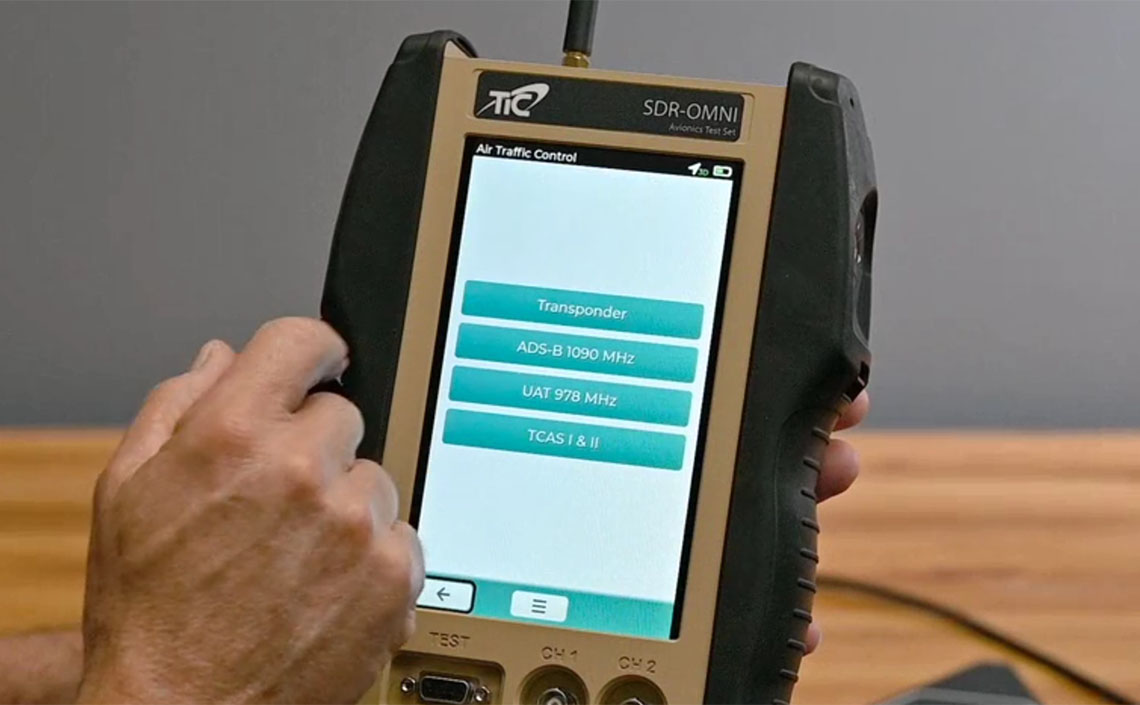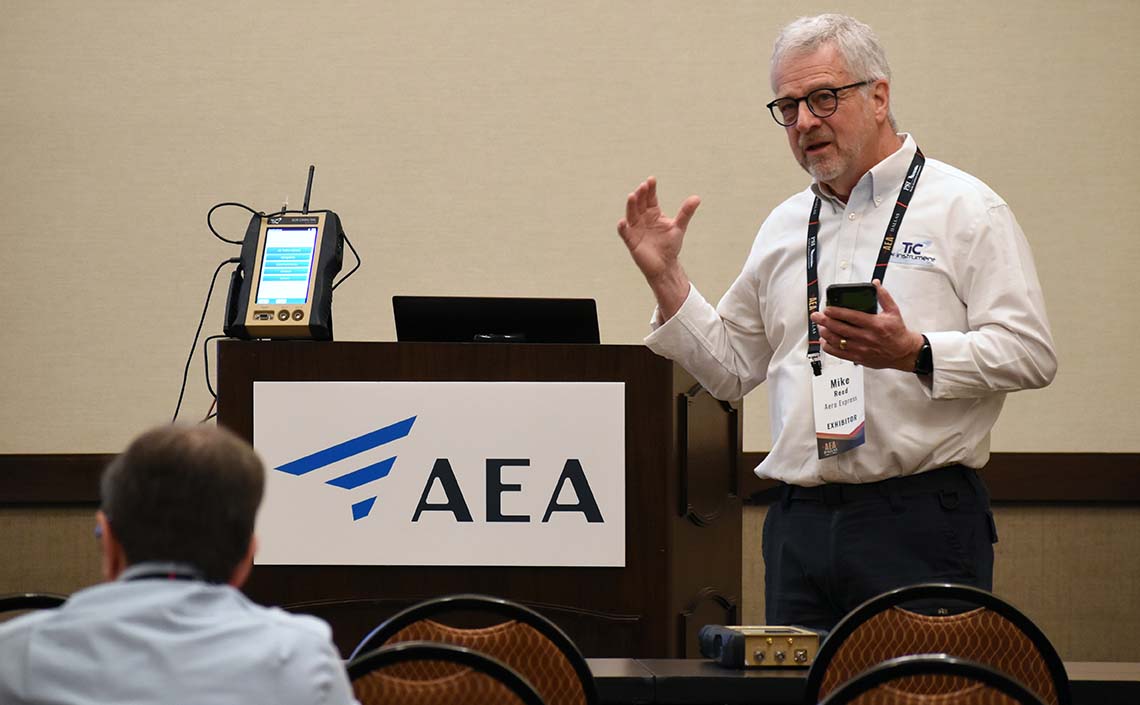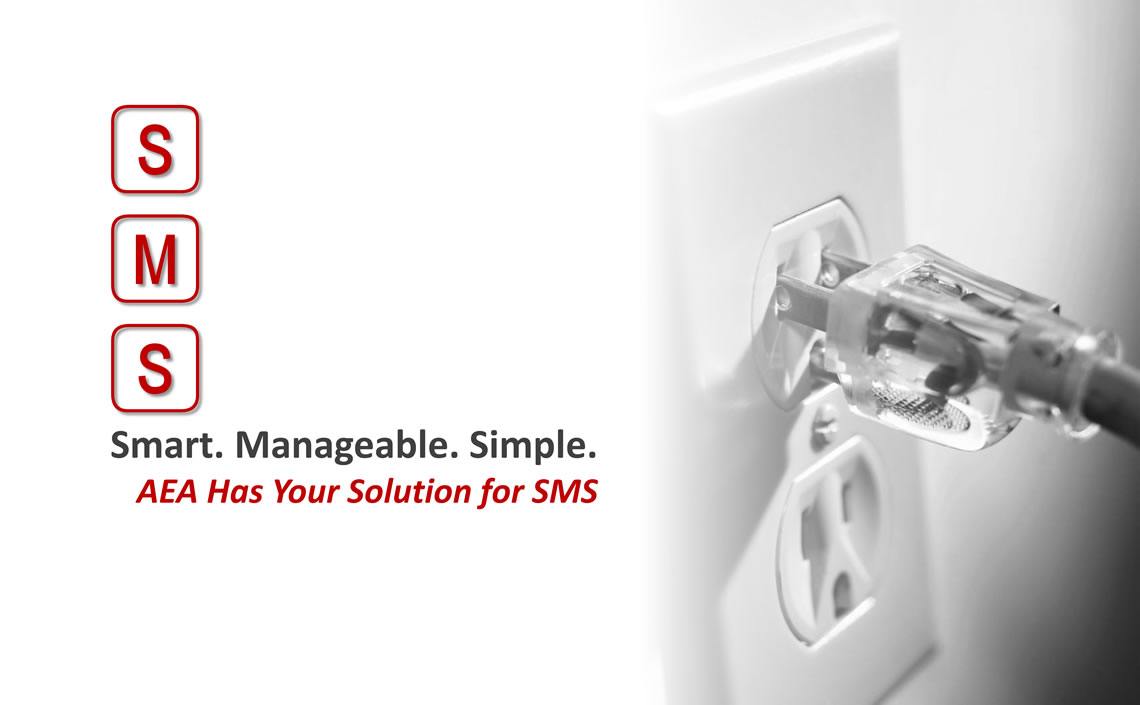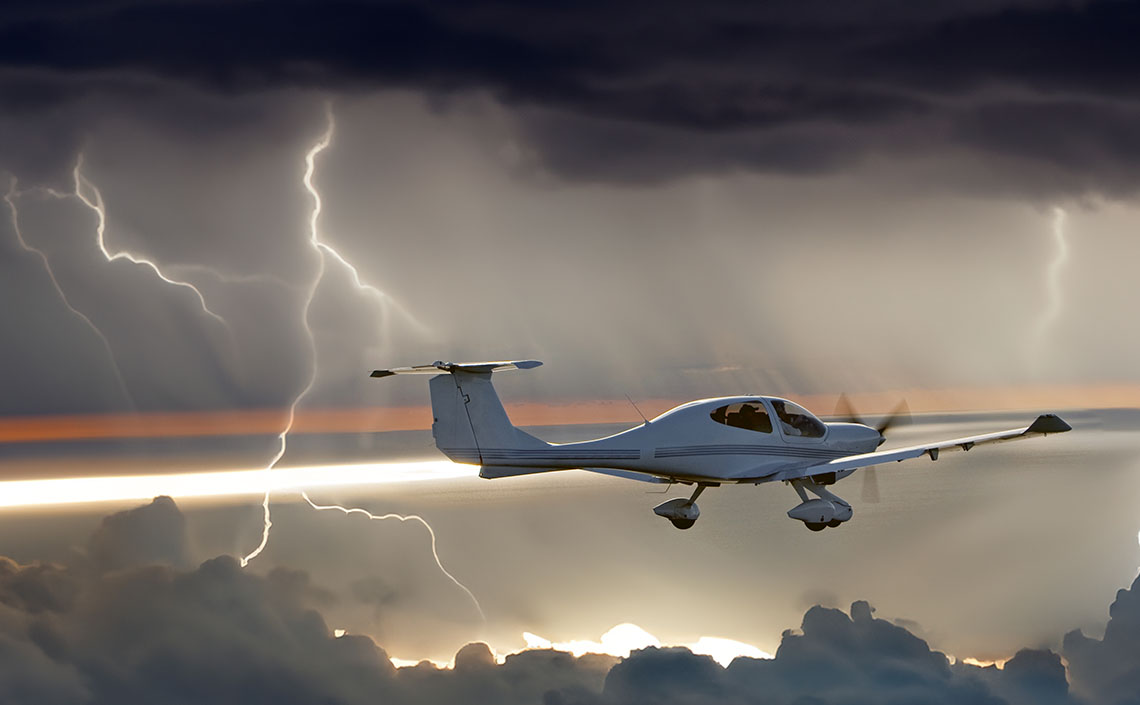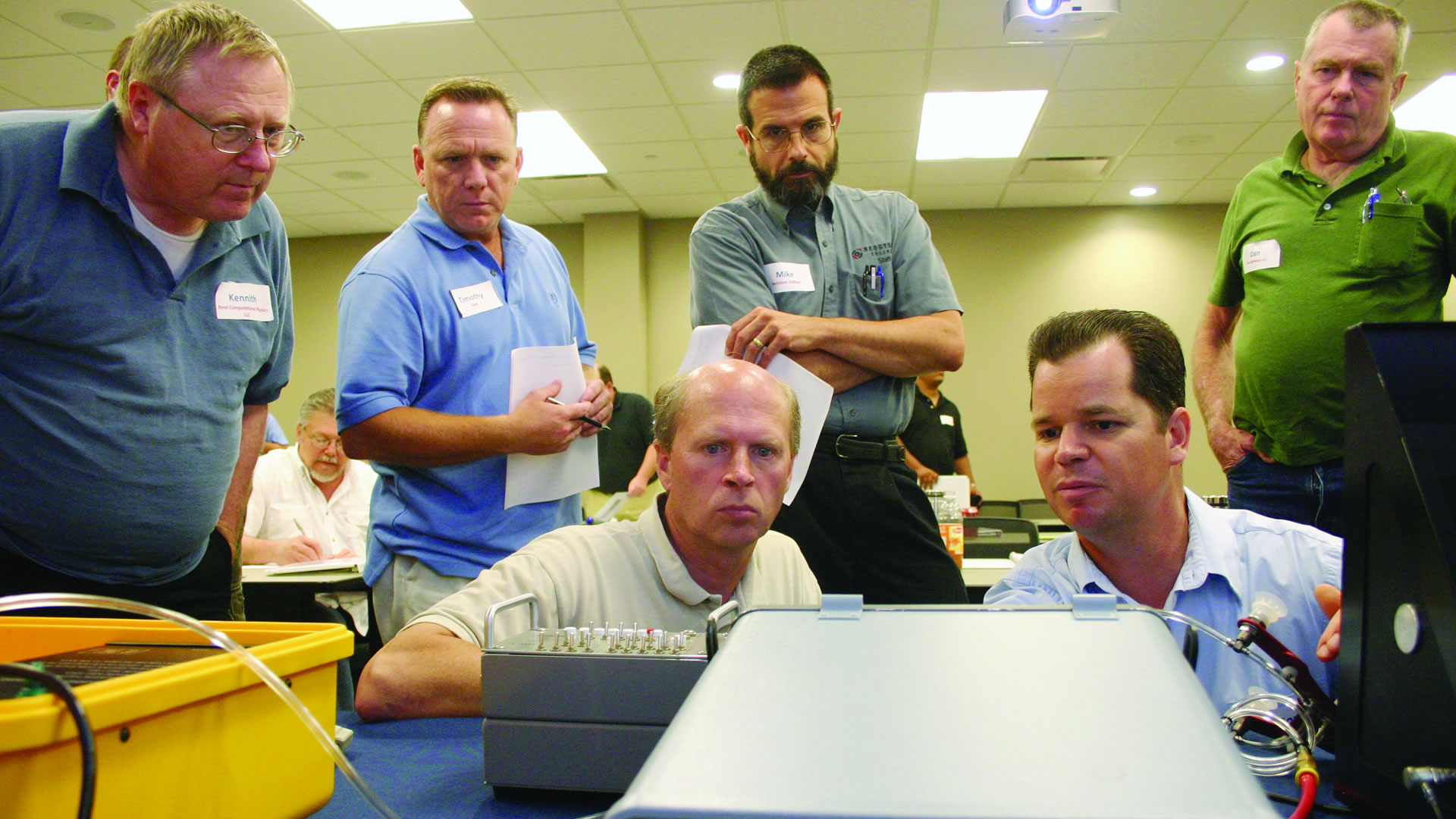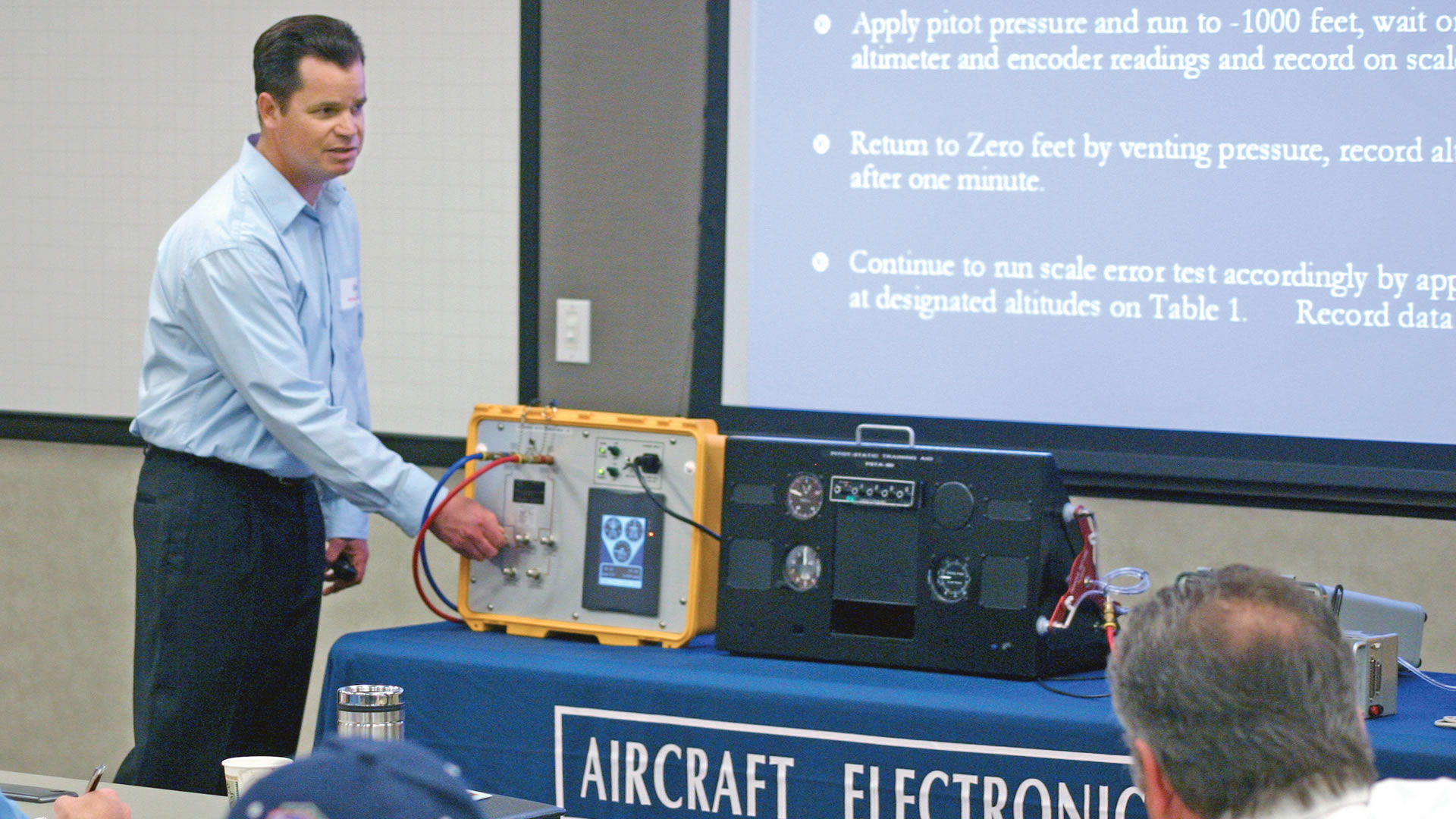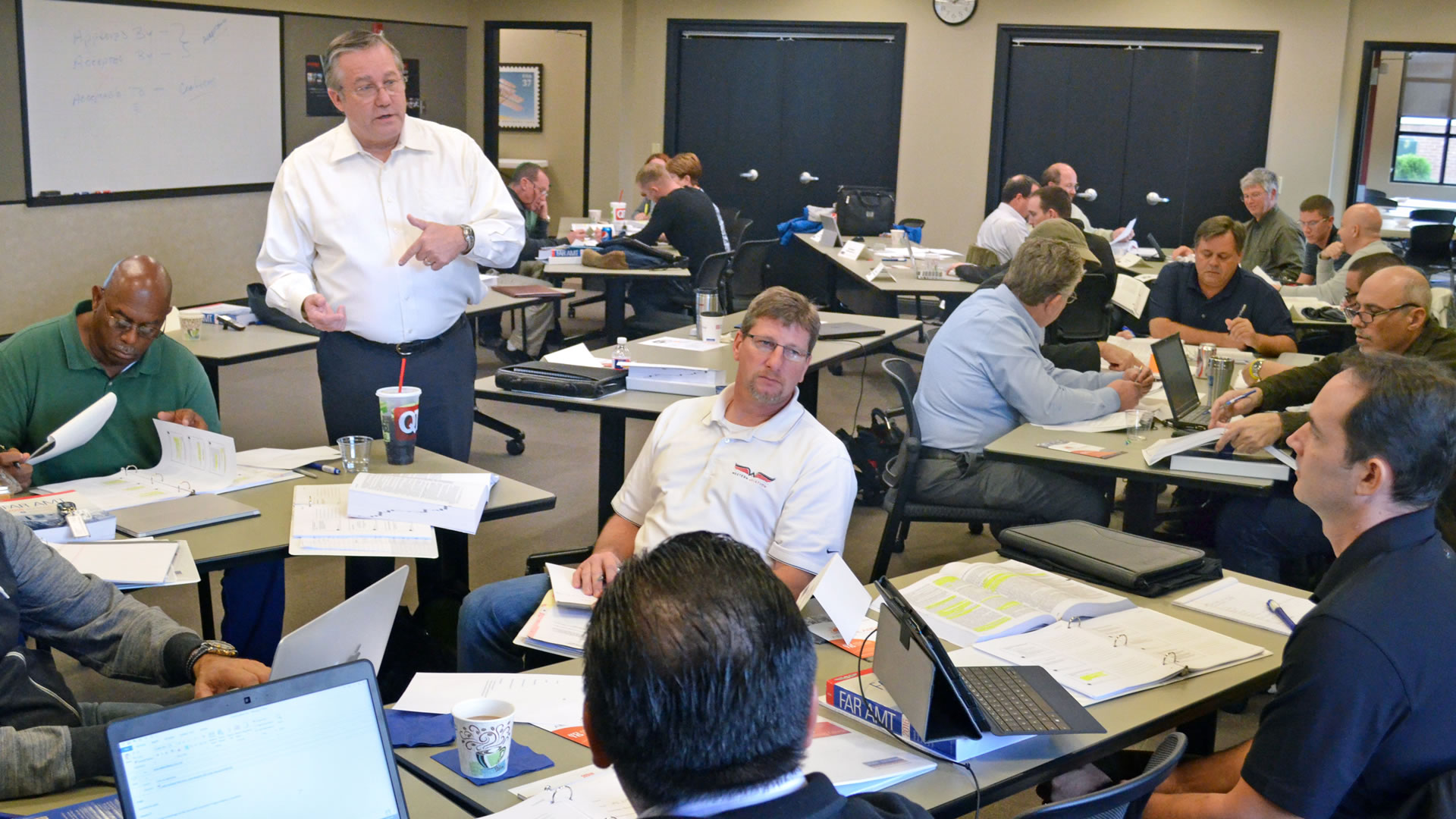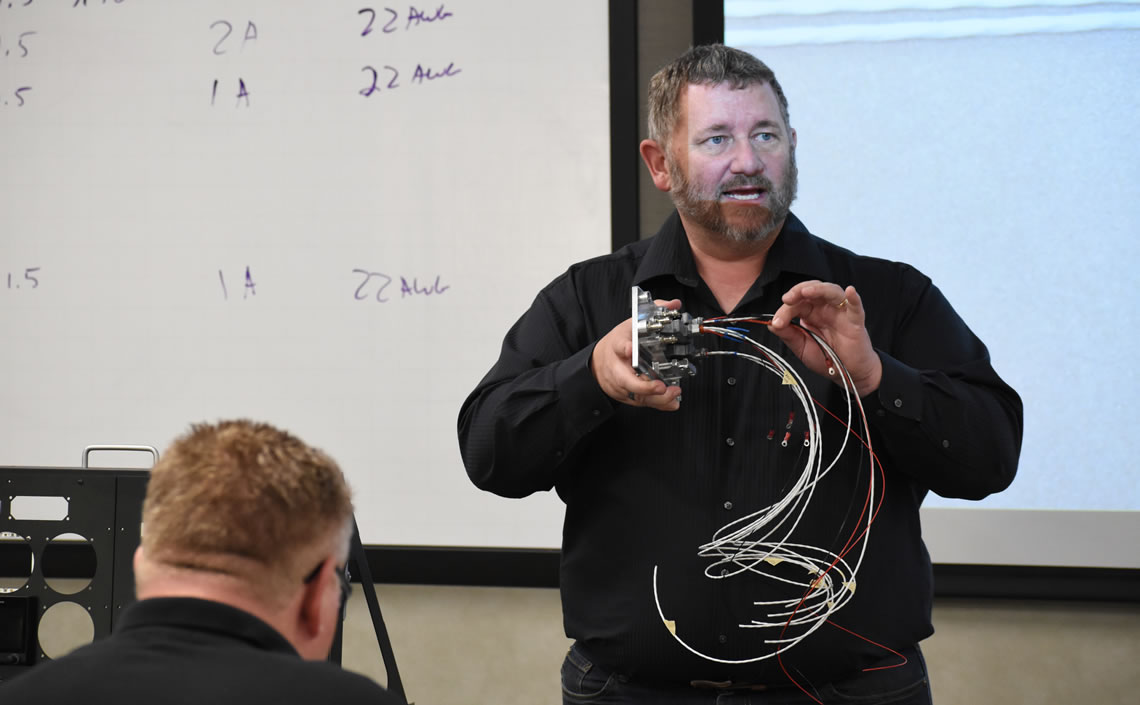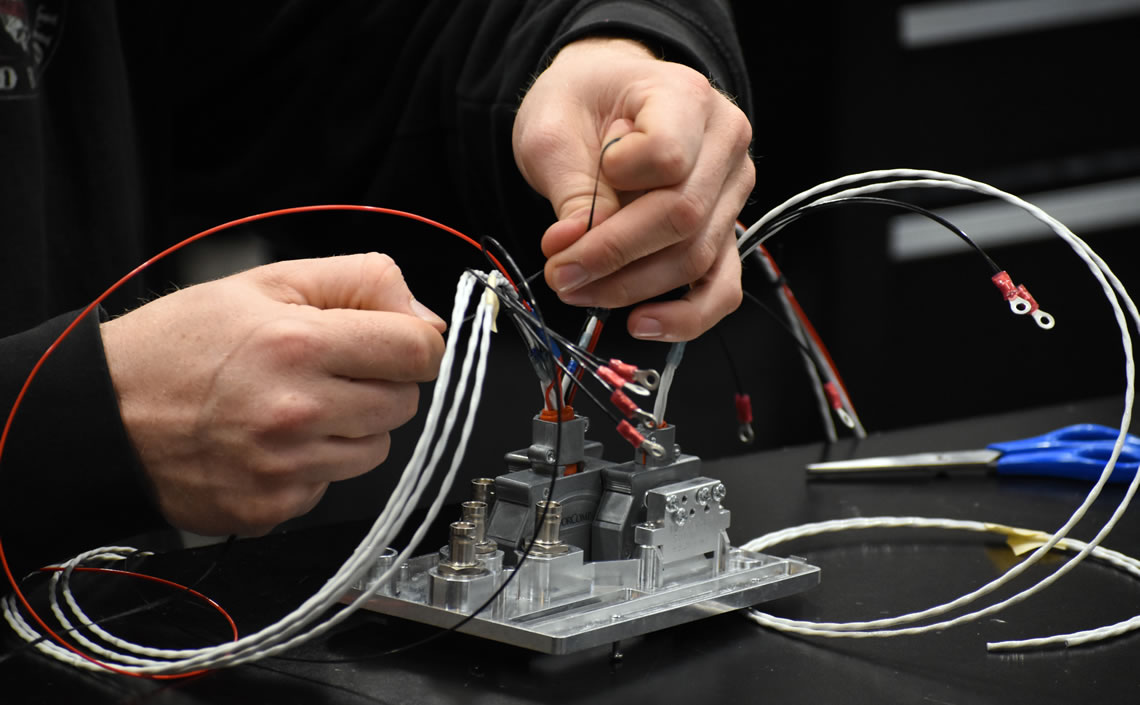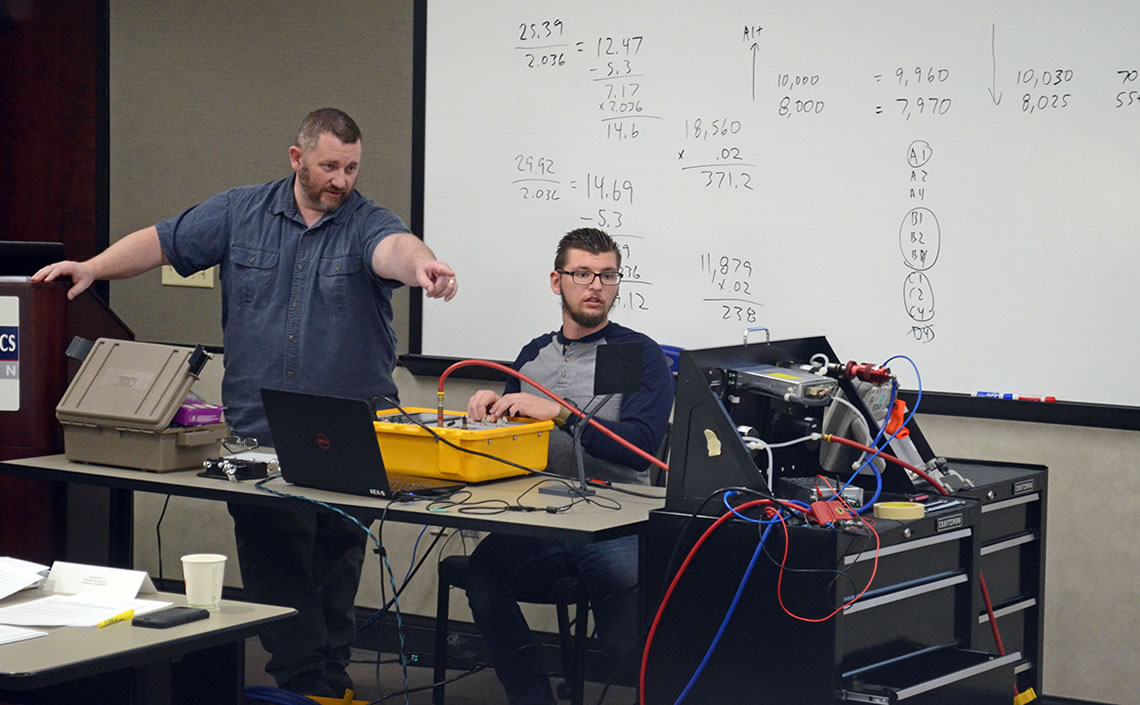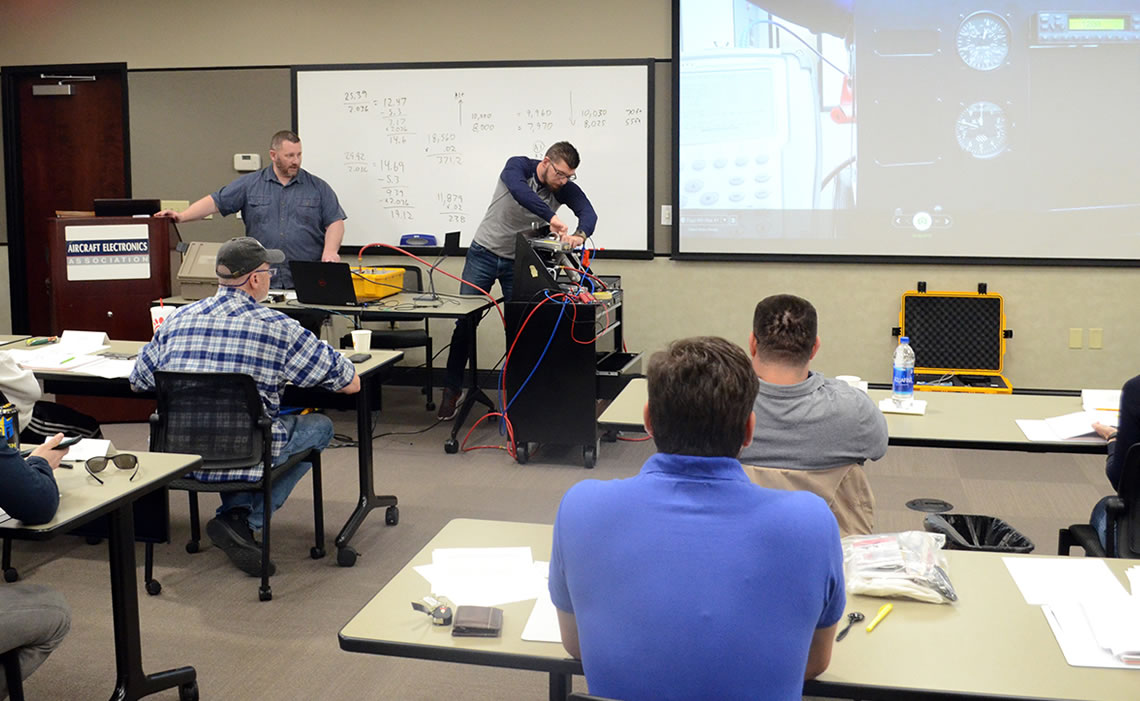This half-day course is designed to provide avionics technicians with the knowledge and skills required to operate and configure the TIC SDR-OMNI All-in-One Avionics Test Set.
Presented by:
Kevin Orach, Tel-Instrument Electronics Business Development Manager &
Zane Cersovsky, Tel-Instrument Electronics Senior Software Engineer
Course Objective:
To provide the students with an overview and understanding of all the features and functions of the SDR-OMNI test set. Several features and functions will be demonstrated with live avionics units. This will include:
- Familiarization with all hardware and accessories provided
- Overview of SDR-OMNI menu structure and setup parameters
- Remote operation via phone or tablet using SDR-OMNI wi-fi hotspot
- Transponder testing: (using Garmin GTX-345)
- Execution of automated FAA Part 43 Appendix F required test
- Creation, storage, and printing of test report
- FAR 91.411/413 correspondence testing of altimeter system vs. transponder reported altitude
- Manual transponder troubleshooting techniques
- ADS-B OUT testing per FAR 91.227 and AC20-165B (using Garmin GTX-345)
- 1090 MHz Mode S ADS-B OUT
- 978 MHz UAT ADS-B OUT
- Air mode vs. Ground mode
- 91.227 report generation
- ADS-B IN testing – both 1090 MHz and 978 MHz (using uAvionix Echo UAT)
- Traffic scenario creation
- FIS-B testing (using Echo UAT)
- NEXRAD radar pattern generation
- METAR generation
- ACAS/TCAS testing
- Scenario Setup
- Mode C target vs. Mode S target
- TCAS testing techniques
- VOR/ILS testing
- Setup
- ILS testing: Localizer, Glideslope, and Marker Beacon components
- VOR testing: Bearing
- ILS/VOR testing techniques
- ILS and/or VOR receiver sensitivity testing
- Audio ident tone testing
- Modulation On/Off – Flag testing
- Autopilot coupling testing by sweeping
- DME testing - (using KN-62 DME)
- COMM radio testing
- Aircraft radio receiver testing – sensitivity
- Aircraft radio transmitter testing – power, frequency
- Use of tone vs. voice
- COMM radio testing techniques
- ELT testing (using Artex C406-N ELT)
- 406 MHz burst
- 121.5 MHz / 243 MHz frequency, power, and audio detection
- Report generation
- Audio / ICS system testing
- Audio tone injection and reception
- Audio distortion measurement
- VSWR / Distance to Fault Testing (using cable + antenna fixture)
- RF FDR basics (frequency domain reflectometry)
- VSWR / DTF troubleshooting techniques
- Cable Insertion Loss measurement
- Retrieval and printing of stored test reports
- Performing software updates to the SDR-OMNI
The instructors will provide detailed training in the areas of required FAA testing – transponders, ADS-B OUT, and ELTs. In addition, test strategies and techniques will be covered that will allow avionics technicians to efficiently test and troubleshoot common avionics problems using the SDR-OMNI test set.
Course Prerequisites:
- Understanding of basic general aviation avionics systems – transponders, VOR/ILS/DME, communications radios, ELTs
Course Goals:
Upon successful completion of the course, students will be able to demonstrate understanding and proficiency in the following:
- Testing and troubleshooting of mandated FAA tests for transponder, ADS-B OUT, and ELT
- Operation of full range of test capability of the TIC SDR-OMNI
Other Upcoming Courses
Avionics Installation for Experimental Aircraft
This course is targeted for the home builder or avionics technician who wants to learn about performing an avionics installation in an experimental aircraft. The class focuses on the Garmin G3X Touch system, and a simplified example harness is constructed as part of the hands-on portion of the class. While the G3X Touch system is the primary focus, the wiring principles and general guidance can be applied to any experimental avionics system. From the do-it-yourselfer to the avionics shop looking to carve out a niche, this class has something for everyone.
Safety Management System Coordinator Training
VIRTUAL-LIVE COURSE
Risk management is a vital element of any successful business. Whether driven by best practices or responding to a regulatory requirement, the AEA has your solution. Leveraged by the 900-strong repair station membership, the AEA developed a proprietary SMS program designed specifically for maintenance organizations. This program is currently used on every continent. The AEA has been coordinating with the Federal Aviation Administration and Transport Canada Civil Aviation, as well as discussions with the Australian government's Civil Aviation Safety Authority and the European Union Aviation Safety Agency, for future acceptance.
Introduction to DO-160 Qualification
Digital Databus Theory & Analysis
VIRTUAL-LIVE COURSE
As today’s modern airplanes become much more technologically advanced, so must the professionals that maintain them. The advanced avionics and instrumentation systems used in these aircraft rely on various forms of digital databus communication. Understanding digital databus theory is becoming more and more important for avionics technicians, and even A&P mechanics, to effectively test and troubleshoot these highly advanced aircraft systems.
Aircraft Instrument Systems
VIRTUAL-LIVE COURSE
This course is designed for avionics technicians or apprentices who want to learn more about aircraft instrument systems and better understand their operation, installation considerations, and maintenance to become more effective troubleshooters. From simple mechanical gauges to complex electrical and electronic systems, this course covers nearly every instrument system in an aircraft.
Advanced Avionics Installation & Configuration
Technicians will learn how to plan, install, interface, configure and check out an installation of a primary flight display, EHSI and GPS/Nav/Com consisting of dual Garmin GI 275, a Garmin GTN 650 touch screen, and a Garmin GTX 345 transponder. Designed for technicians who have experience with avionics installation practices and are looking for more training integrating common general aviation installations.
FAA Accepted 8 Hours - Course # C-IND-IM-240801-K-022-0006
Pitot-Static, Transponder, RVSM, and ADS-B: Testing & Inspection
Attendees will learn the proper methods for conducting pitot-static and transponder tests and inspections. This two-day course offers a regulatory review and an explanation of the proper administrative procedures for completing these critical certifications. Preparing and performing RVSM inspection tasks. ADS-B session covering installation, wiring and return to service review.
FAA Accepted 8 Hours - Course # C-IND-IM-170106-K-010-005
Certified Repair Station Training
This weeklong course provides an interactive environment to learn, understand and implement the regulations that govern repair station design and operations.
FAA Accepted 5 Hours - Course # C-IND-IM-180621-K-010-001
Basic Wiring & Avionics Installation
The Basic Wiring & Avionics Installation course is designed for certificated repairmen, new avionics technicians, aviation maintenance technicians and recent graduates interested in improving or acquiring the skills necessary to perform avionics installations. This three-day seminar employs in-depth theory and hands-on lab exercises to immerse the attendee in the best practices used to plan, manage, and install a general aviation avionics panel. Installation lab includes: Avidyne IFD540 FMS/GPS Navigator, Garmin G5 Electronic Flight Instrument & GAD 29 ARINC 429 data bus module, PS Engineering PMA8000BT Audio Panel and Trans-Cal SSD120-35C-RS-232 Altitude Encoder
FAA Accepted 8 Hours - Course # C-IND-IM-161028-K-010-002
AVX-10K & IFR6000/4000 Operations Training
This course is designed to provide maintenance personnel with the knowledge and skills required to operate and configure IFR6000 & IFR4000 to verify and maintain transponder, UAT, TCAS, DME, ILS, VOR, Comms and ELT. Plus a complete review all features and benefits of the AVX-10K Flight Line Test Set with emphasis on testing transponder (Mode S and ADS-B In/Out), UAT, TCAS and DME.
Basic Pitot-Static & Transponder Theory, Testing & Troubleshooting
The Basic Pitot-Static & Transponder course is designed for entry-level avionics technicians or those looking for basic training on pitot-static & aircraft transponder systems. This two-day course covers the history and theory of operation of pitot-static instruments and transponders, as well as system set-up, hands-on testing, and the troubleshooting skills necessary to perform FAR 91.411 and 91.413 checks.
FAA Accepted 8 Hours - Course # C-IND-IM-240718-K-022-0011

